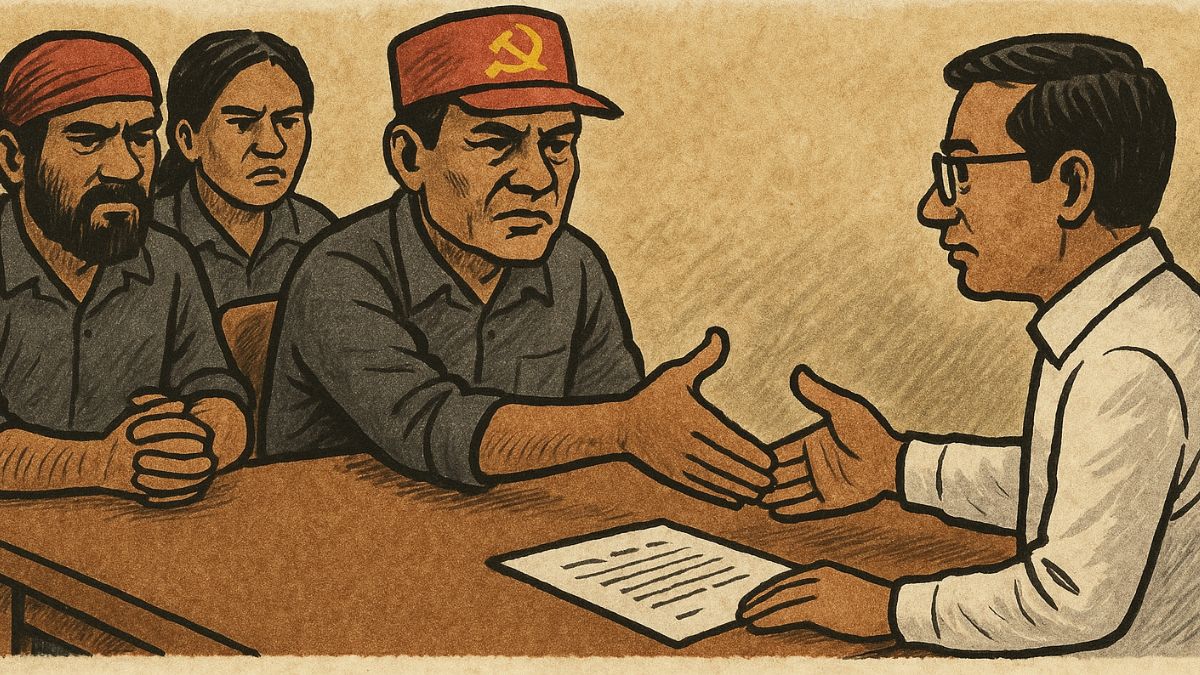The government is leading a decisive battle against Left Wing Extremism and as part of its zero-tolerance policy against Naxalism, 90 Naxals have been killed, 104 arrested, and 164 have surrendered by March 2025. In 2024, 290 Naxalites were neutralized, 1,090 were arrested, and 881 surrendered.
Of late, many high-profile naxals and Maoists were neutralized by state police, CRPF and its special operation unit CoBRA. Earlier this week on Monday (September 15, 2025), the Central Reserve Police Force and Jharkhand Police eliminated 3 senior Maoist leaders, carrying a combined reward of Rs 1.35 crore.
They were killed in an Operation codenamed Chuna Pathar and those killed were Sahadev Soren, Central Committee Member, carrying a bounty of Rs 1 crore; Raghunath Hembram, Special Area Committee Member, with a Rs 25 lakh reward; and Virsen Ganjhu, Zonal Committee Member, with a Rs 10 lakh reward.
Anti-naxal crackdown: What’s happening on ground?
On Wednesday (September 17, 2025), at least 2 women Naxalites were reported to be killed in an encounter with security forces in Maharashtra’s Gadchiroli district. The encounter broke out after an input of a few members of Gatta LOS (local organisation squad) of Maoists camping in a forest adjoining Modaske village in Etapalli taluka.
Another woman naxal is learnt to have been neutralized in Chhattisgarh’s Sukma district on Thursday (September 18, 2025). Identified as 35-year-old Buski Nuppon, she was wanted in connection with nine cases and was carrying a reward of Rs 5 lakh. A rifle and a large quantity of explosive material has been recovered from the site.
Not just this, but several naxals are also surrendering themselves and estimates suggest that 16,780 naxals have surrendered in Chhattisgarh from 2000 To 2024. Moreover, since January 2024 to March 2025, a total of 723 naxalites have surrendered in Chhattisgarh.
India well on path towards a naxal-mukt bharat?
The government is committed to completely eliminate Naxalism by March 31, 2026, and its vision of a naxal-mukt Bharat may be closer to reality than ever before. After decades of bloodshed and insurgency, the banned CPI (Maoist) outfit, long considered India’s most entrenched internal security challenge, has floated an unexpected proposal for peace.
A month-old press note, dated August 15, 2025, and issued by Maoist spokesperson Abhay, has surfaced. It declares a “temporary suspension of armed struggle” for one month and expresses readiness to hold peace talks with the Centre, NDTV reported.
The group has asked for a government-appointed committee to initiate dialogue during this period, and the note further adds that they demand participation of jailed leaders in the talks, safe passage for cadres, and assurances against police operations while negotiations are underway.
How has the government cornered maoists?
The Maoist overture comes against the backdrop of one of the biggest crackdowns in decades, in line with Home Minister Amit Shah’s promise to end Left-Wing Extremism by March 2026.
February 2025: 31 Maoists neutralized in Chhattisgarh’s Bijapur.
May 2025: Security forces struck deep in Abujhmad, eliminating 28 cadres including top leader Nambala Keshava Rao alias Basavaraju, the group’s supreme commander.
September 2025: CRPF’s elite CoBRA unit killed Sahdev Soren, Central Committee member with a Rs 1 crore bounty, in Jharkhand.
Maharashtra’s Gadchiroli: Long-standing PLGA formations dismantled by joint CRPF–Maharashtra Police operations.
The loss of top leadership and continuous security pressure have crippled Maoist operational strength, forcing them to seek a truce.
What is government’s reaction to ceasefire?
Government sources, cited by NDTV, have cautiously welcomed the ceasefire note as a “positive step” but remain vigilant. Officials are verifying the authenticity of the letter and evaluating if the move is genuine or a ploy for regrouping. Moreover, the Centre is clear that talks cannot come at the cost of security gains.
If peace holds, conflict-hit regions across Chhattisgarh, Jharkhand, Odisha, and Maharashtra could finally see the state delivering where insurgency once thrived, permanent roads, schools, hospitals, land rights, and forest rights. For Adivasi communities, a successful settlement could mean an end to decades of ambushes, landmines, and displacement.
End of maoism in sight?
Born from the 1967 Naxalbari uprising in Bengal, Maoism spread into a “Red Corridor” spanning several states and became India’s longest-running internal war. Today, with Maoists weakened and seeking talks, the government’s vision of “Naxal-Mukt Bharat” is closer than ever.
But the important question remains: will this ceasefire usher in lasting peace, or is it just another tactical pause by a fading insurgency?
